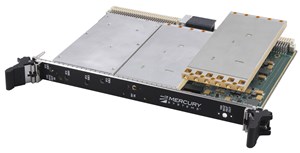Oct 8 2014
Mercury Systems, Inc., a leading provider of affordable, commercially developed, open sensor processing systems and services for critical commercial, defense and intelligence applications, announced it has launched the OpenRFM™ standards initiative designed to streamline the integration of RF and digital subsystems in advanced sensor processing applications with the goal of creating more affordable, flexible and open standards-based solutions.
 Mercury Systems OpenRFM Concept
Mercury Systems OpenRFM Concept
This initiative will directly address Department of Defense (DoD) procurement mandates including open systems architecture, interoperability, technology re-use and affordability.
"RF and microwave technologies have been part of the underlying fabrics of critical defense applications for generations, yet little progress has been made to date in standardizing these technologies in order to meet the DoD's directives around affordability and open system architectures," explained Dr. Ian Dunn, Vice President of Mercury's Embedded Products group. "In 2009, Mercury, with strong participation from other industry players and the defense contracting community, drove the creation of the OpenVPX industry standard, helping to standardize embedded computing within defense electronics. We are now seeing a similar need for standardization in RF and microwave systems for EW and SIGINT. As a result, we are launching OpenRFM, an initiative created specifically to address the RF and microwave integration challenges our customers have told us they face."
A standards-based, modular open architecture, OpenRFM provides state-of-the-art design, test, and control practices for interfacing RF and digital subsystems in an embedded architecture, such as OpenVPX. It enables seamless integration of RF and microwave elements within electronic warfare (EW) and signals intelligence (SIGINT) sensor processing chains by standardizing electromechanical and thermal interfaces, software and control plane protocols. Its modular approach coupled with system management capabilities helps drive design flexibility, solution scalability and technology re-use across applications and platforms. As a result, OpenRFM enables prime contractors and the DoD to develop and deploy new or existing EW and SIGINT applications more effectively and affordably.
Mercury is currently developing OpenRFM-based standardized subsystems that can meet the open system architecture requirements required for affordable, standardized, interoperable solutions for EW and SIGINT applications. Technical briefings on these standardized solutions are underway with select customers, and a technical white paper will be published soon.